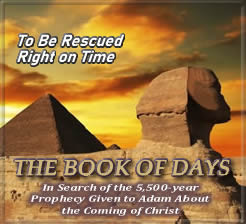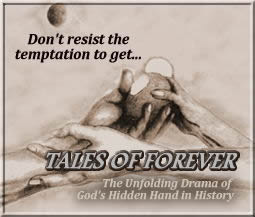The Curtain Rises
Impossible Wonders
In 1768, an ancient manuscript known as The First Book of Enoch was located in the mountains of Ethiopia. At the same time, Britain and America and, in effect, most of Europe were hopelessly embroiled in what was actually the first world war of ideas. Then, just when it seemed that our troubled world needed them most, more and more of these literary treasures from antiquity began to be rediscovered.
Ironically, though, after managing to recover these impossible wonders from the depths of oblivion, no one bothered to translate them. Rather than being seen as potential gems of spiritual wisdom, these priceless documents were relegated to the status of rare artifacts. So, for more than half a century, they sat unopened and unread on various museum shelves, simply gathering dust. But once the arduous task of decipherment had been completed, manuscripts like First Enoch began providing the West with a vivid, haunting glimpse into humanity’s spiritual origins and destiny. Almost overnight, an entirely new way of understanding ourselves had been unveiled, as old as time itself.
Centuries of Suppression
Still, as much as these manuscripts have managed to illuminate the human condition, they have also sparked an inordinate amount of derision and controversy. Having survived for twenty centuries or more, these priceless documents depict events that reach far beyond normally accepted limits of prehistoric time. Most notable among these—besides First Enoch—are The First Book of Adam and Eve, The Secrets of Enoch, The Book of Jasher, The Letters of Herod and Pilate, and The Gospel of Nicodemus. Sadly, however, they have all generally been ignored, dismissed, or suppressed, presumably because of their provocative rendering of historical events and characters.
Story Continues Below
Says Richard Price—the founder and CEO of Academia.edu—on his podcast In Depth With Academia:
The Book of Tales: Stories That Confirm the 5,500-year Prophecy Given to Adam About the Coming of Christ is:
To hear Price’s book review of The Book of Tales, CLICK HERE.
To hear Kent and Zen Garcia continue their discussion concerning the implications of the 5,500-year chronology from Adam to Christ as it pertains to the faithfulness of God, CLICK BELOW.
Story Continues From Above
A typical example of this is First Enoch, which had been read and respected by Jews and Christians alike, and which had stood side by side with The Book of Revelation during the first four centuries of the Christian Era. While many of the Church Fathers, such as Clement, Ambrose, and Tertullian, endorsed it, others did not hold to this favorable view.
Because of the efforts of influential opponents of the book, like Augustine and Jerome, who were critical of Enoch’s description of those peculiar angels, or Watchers as they were called, the book was eventually deemed heretical. Along with other Enochic writings, it was banned from the mainstream of Scripture. Shredded and burned, the book was lost to the West for over a thousand years. Yet with remarkable persistence, many of these ancient gems have, slowly but surely, made their way back into circulation. Today, thanks to the efforts of a handful of men who were uniquely capable of seeing beyond the veil of skepticism and doubt, nearly everyone has heard something about these remarkable books.







